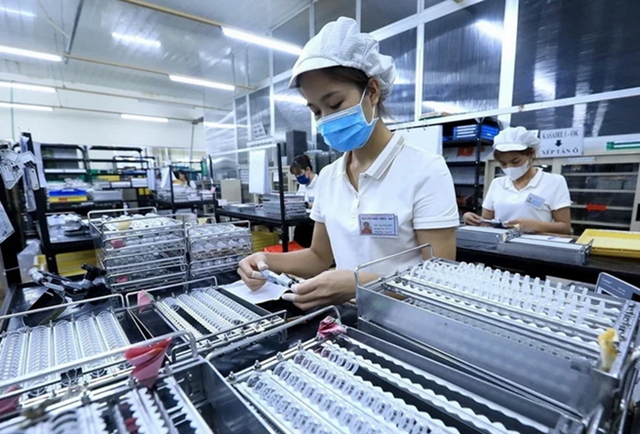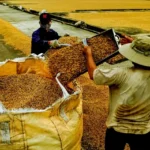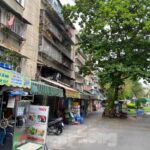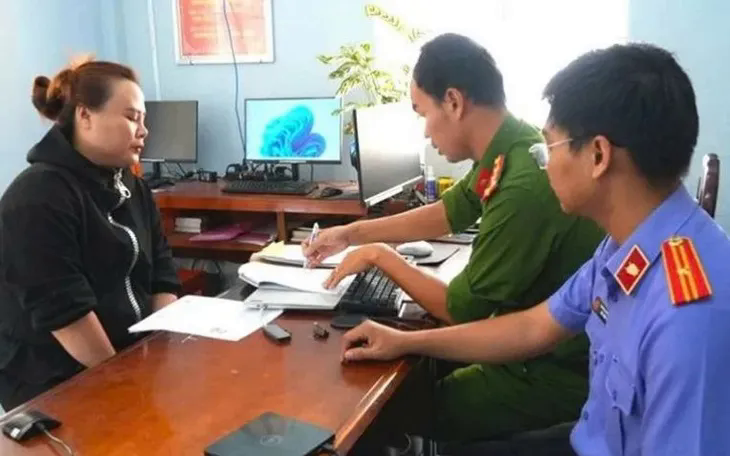**Ho Chi Minh City’s Export Processing and Industrial Zones: A Hub for FDI and High-Tech Industries**

Employees working at an FDI company. (Photo: Tuan Anh/VNA)
|
Ho Chi Minh City’s Export Processing and Industrial Zones have witnessed impressive growth in foreign investment during the 2020-2025 period, attracting over $2.86 billion, surpassing the target of $2.5 billion.
This includes over $935.3 million in foreign investment, with 75 new projects, and domestic investment surpassing $1.9 billion, with 202 new projects, totaling more than $45.437 billion VND.
The Management Board of the Ho Chi Minh City Export Processing and Industrial Zones shared this information on the morning of June 16, 2025.
Mr. Le Van Thinh, Head of the Management Board, highlighted a shift in investment structure towards high-tech industries and those with high added value, including software, telecommunications, electronics, pharmaceuticals, precision engineering, and electrical and electronic industries.
Notably, 15 high-tech projects accounted for 6% of new projects, contributing $859.87 million in investment, or 44.17% of the total new investment of over $1.9 billion.
Notable investors include VNG Joint Stock Company, Viettel Military Industry and Telecoms Group, and the multinational Techtronics Industries Company PTE. LTD.
Moreover, new projects have created over 25,000 new jobs, with a total workforce of more than 257,700 people to date. The employees are technically skilled, dynamic, disciplined, and aware of legal regulations, embracing technological advancements and international integration. On average, over 85% of the workforce has received training, with some companies having over 90% university-educated employees.
The Management Board has also focused on supporting the development of businesses and products in the rubber-plastic, mechanical-automation, and food processing industries. They prioritize land allocation for key product development projects that utilize advanced technology and meet environmental standards.
Additionally, they are directing the development of specialized industrial zones for rubber-plastic, mechanical-automation, and food processing industries in new industrial zones, as outlined in the city’s proposal, “Orientation for the Development of Ho Chi Minh City’s Export Processing and Industrial Zones for the Period of 2022-2030, with a Vision to 2045.”
Mr. Thinh also shared that the planning and development of the city’s export processing and industrial zones are integrated into Ho Chi Minh City’s development plan for the period of 2021-2030, with a vision towards 2050, as per the Prime Minister’s Decision No. 1711/QD-TTg dated December 31, 2024.
This plan includes retaining the 23 existing export processing and industrial zones, spanning over 5,900 hectares, and allocating an additional 2,465 hectares for the potential establishment of 10 new zones, bringing the total area to 8,369 hectares across 33 zones.
To enhance land use efficiency and meet businesses’ production and operation needs, the zones have developed over 531,200 square meters of multi-story factories (a five-fold increase against the target). Regular maintenance of technical infrastructure is conducted, and state management of construction order is emphasized, along with post-license inspections.
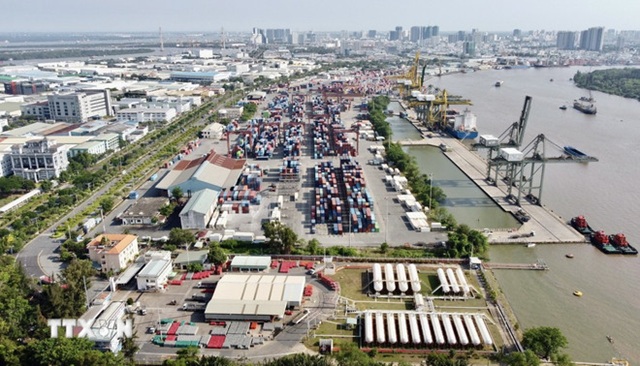 Tan Thuan Export Processing Zone, connected to Tan Thuan Port, forms a production-export ecosystem in Ho Chi Minh City. (Photo: Trung Tuyen/VNA)
|
All 17 operating export processing and industrial zones have established 19 centralized wastewater treatment stations that meet environmental standards. They have also installed automatic water quality monitoring systems, connected to the city’s Agriculture and Environment Department’s monitoring center, and developed plans to prevent and respond to environmental incidents related to wastewater treatment systems.
Notably, the pilot conversion of the Hiep Phuoc Industrial Zone into an eco-industrial park, as part of the project “Implementing Eco-Industrial Parks in Vietnam towards a Global Eco-Industrial Park Program,” has yielded positive results.
To further enhance investment attraction, the Management Board has improved its management effectiveness, adopting a “one-door, on-the-spot” mechanism and promoting administrative reforms. They have streamlined their organizational structure and reduced the number of departments from eight to six, cutting down on processing time for administrative procedures by 30%, with 12 procedures in the investment field and one in the labor field.
Thanh Vu
– 16:12 16/06/2025
“NBB Garden III Receives Detailed 1/500 Planning Approval”
As of the disclosure announcement on June 16, 2025, Ho Chi Minh City Technical Infrastructure Investment Joint Stock Company (HOSE: CII) revealed that the NBB Garden III residential project of Nam Bay Bay Investment Joint Stock Company (HOSE: NBB) has been approved for a detailed urban planning adjustment plan at a 1/500 scale.
The Investment Appeal of Ho Chi Minh City’s New Mega-Metro
The recent approval of the proposal to merge Ho Chi Minh City, Binh Duong, and Ba Ria-Vung Tau marks a pivotal moment in the comprehensive restructuring of urban spaces, infrastructure, and investment flows in Southern Vietnam. This ambitious undertaking heralds a new era of development, promising to revolutionize the region’s landscape and unlock unprecedented opportunities for growth and prosperity.
What Will the New Mega-City of Ho Chi Minh Look Like Post-Merger?
Post-merger, Ho Chi Minh City emerged as the nation’s most populous city, boasting a staggering population of over 14 million individuals. It stands as a bustling metropolis, not only in terms of its population but also as a powerhouse of economic prowess, leading the country with its immense scale and potential.
The Online Grocery Conundrum
“In an interview with Tien Phong newspaper regarding the complex issue of unsafe and low-quality food, Mr. Nguyen Quang Huy, Deputy Head of the Ho Chi Minh City Market Management Department, stated that the range of violating products is diverse. It spans from fresh produce and ready-to-eat meals to sugar, bird’s nest, and dietary supplements.”
The City of Ho Chi Minh Introduces a 7-Step Renovation Process for Old Apartment Buildings
The Ho Chi Minh City authorities are taking proactive steps to reinvigorate development projects by introducing a competitive bidding process. This process will identify and select new investors with the requisite capabilities to replace those who are no longer legally compliant or have delayed implementation, especially in projects undertaken or previously ceded by state-owned enterprises.

